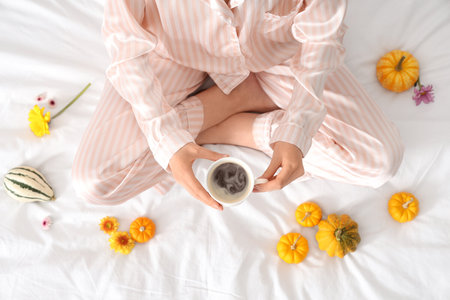Understanding Colour Psychology in British Homes
Colour psychology is a fascinating field that explores the impact of different hues on our mood, emotions, and overall wellbeing. In the UK, where homes are often shaped by both tradition and practicality, the choice of colour within a bedroom can significantly influence the quality of rest and relaxation. British interiors tend to reflect a blend of heritage charm and modern sensibilities, making the application of colour psychology especially relevant. A restful bedroom is more than just a quiet space; it is a sanctuary tailored to promote calmness and sleep. By understanding how colours affect our mental state—whether invoking warmth on a rainy Manchester afternoon or creating an airy feel during the shorter Scottish days—homeowners in the UK can make informed decisions that support better sleep. Appreciating the subtle interplay between natural light (often scarce), architectural features common in British homes, and cultural preferences for certain palettes allows us to use colour not just decoratively but therapeutically. This foundational knowledge sets the stage for selecting soothing hues that resonate with both personal taste and the unique character of British living spaces.
2. The Science Behind Soothing Bedroom Colours
Understanding how colour impacts our mood and sleep quality is essential when designing a restful bedroom. Scientific studies show that certain hues can actively promote relaxation, reduce anxiety, and contribute to better sleep. Researchers in the UK and beyond have consistently found that cool colours—particularly shades of blue and green—tend to lower blood pressure and heart rate, creating an environment conducive to winding down.
How Colour Affects Sleep
The science of colour psychology suggests that our brains respond to different wavelengths of light emitted or reflected by colours. For instance, blue tones are often associated with calmness due to their ability to decrease cortisol levels (the stress hormone). Green, reminiscent of nature, also encourages tranquillity. In contrast, bright reds and oranges can stimulate alertness and may hinder sleep for some individuals.
Popular Choices Among Brits
Recent surveys in the UK highlight preferred bedroom colours for relaxation. While personal taste plays a role, there’s clear evidence that some hues are chosen more frequently for their soothing properties. Below is a summary of popular British choices alongside supporting scientific insights:
| Colour | Psychological Effect | Scientific Evidence |
|---|---|---|
| Soft Blue | Calming, reduces tension | Lowers blood pressure, slows heart rate |
| Pale Green | Restorative, peaceful | Associated with reduced anxiety |
| Muted Grey | Neutral, promotes balance | Aids in mental unwinding if paired with warm accents |
| Lavender | Mildly uplifting yet relaxing | Shown to alleviate stress in clinical settings |
| Cream/Off-White | Clean, non-distracting backdrop | Helps focus attention away from visual clutter |
Key Takeaway for UK Bedrooms
The prevailing research and local preferences converge on one point: selecting the right hue matters. Opting for cooler tones such as blue or green aligns well with both scientific advice and the tastes of many Brits seeking restful bedrooms. Ultimately, pairing evidence-based colour psychology with your personal comfort can make all the difference in achieving quality sleep.
![]()
3. Recommended Sleep-Friendly Colour Palettes for UK Bedrooms
When it comes to designing a restful bedroom in the UK, selecting the right palette is crucial. British interiors often favour colours that evoke a sense of calm and timeless elegance, drawing inspiration from the country’s unique light and natural surroundings. Below, I’ll outline several soothing palettes tailored for British tastes and homes.
Muted Blues: Tranquillity Inspired by British Skies
Muted blues are a perennial favourite in UK bedrooms due to their association with relaxation and serenity. Shades like duck egg blue, powder blue, and steel blue reflect the soft light found in many British homes and evoke the calming effect of an overcast sky. Farrow & Ball’s ‘Light Blue’ or Dulux’s ‘Denim Drift’ are excellent choices, pairing well with both modern and traditional decors.
Gentle Greens: Echoes of the British Countryside
Soft greens bring a touch of the outdoors inside, channelling the lush fields and gardens typical across the UK. Sage green, olive, and pale moss are especially popular for their grounding qualities. These hues work beautifully with wooden accents or vintage furnishings common in British homes. Try Little Greene’s ‘Sage Green’ or Crown’s ‘Botanical Extract’ for an authentic feel.
Soft Greys: Modern Elegance Meets Comfort
Greys have become a mainstay in UK interiors, thanks to their versatility and understated charm. Opt for lighter shades such as dove grey or warm stone to keep bedrooms feeling airy yet snug. Paints like Farrow & Ball’s ‘Ammonite’ or Johnstone’s ‘Silver Feather’ provide a neutral backdrop that pairs effortlessly with colourful accessories or classic white linens.
Warm Neutrals: Creating Inviting Spaces
Beiges, creams, and taupes help foster a welcoming atmosphere—ideal for bedrooms where comfort is paramount. These shades reflect subtle warmth without overpowering a space, making them suitable for both period properties and new builds. Consider Dulux’s ‘Natural Hessian’ or Farrow & Ball’s ‘Skimming Stone’ as reliable options that complement typical UK furnishings.
Blending Palettes for Personal Touch
Don’t be afraid to combine these hues for added depth and personality. For example, pairing muted blue walls with soft grey bedding or introducing gentle green accents through cushions can create a layered yet cohesive look aligned with British aesthetics. Remember: balance is key to maintaining a sleep-friendly environment.
4. Incorporating British Style with Relaxing Tones
When designing a sleep-friendly bedroom in the UK, it’s essential to harmonise soothing colours with quintessentially British interior elements. Whether you live in a Victorian terrace, a modern London flat, or a country cottage, blending calming hues with existing architectural and decor features can create a restful yet authentic atmosphere.
Blending Hues with Period Features
Many UK homes boast period details such as ornate cornices, fireplaces, sash windows, and dado rails. Soft, muted shades—think powder blue, sage green, and warm greys—can complement these features without overpowering them. For example, pale blue walls paired with white mouldings highlight the craftsmanship while promoting tranquillity. Earthy tones like taupe or gentle olive also work well with original woodwork or exposed brick.
Modern Flats: Minimalism Meets Comfort
In contemporary flats, clean lines and open layouts offer flexibility. Here, layering subtle shades—like blush pinks, misty greys, or light oatmeal—keeps spaces serene and visually cohesive. Use accent pieces such as cushions or throws in deeper calming colours (navy or forest green) for warmth without clutter. Consider matte finishes to diffuse light and reduce harsh reflections common in urban settings.
Popular UK Decor Trends
The current British trend leans towards ‘cosy minimalism’—a balance between simplicity and comfort. Natural materials (linen bedding, wool rugs) combine beautifully with tranquil palettes. The following table suggests soothing colour pairings for popular UK decor trends:
| Trend | Base Colour | Accent Colour(s) |
|---|---|---|
| Scandi-inspired | Soft Grey | Pale Blue, Dusty Rose |
| Cottagecore | Sage Green | Cream, Muted Peach |
| Modern Heritage | Warm Taupe | Navy, Olive |
Key Takeaways for British Bedrooms
- Use neutral bases to respect historical features.
- Add texture through soft furnishings in gentle hues.
- Select accent colours that reflect UK landscapes—think heather purple or coastal blue.
Practical Tips:
- Test paint samples in natural daylight to account for the UKs often overcast weather.
- Combine layered lighting (table lamps, wall sconces) to enhance the relaxing effect of your chosen palette.
This thoughtful integration ensures your sleep space is both soothing and unmistakably British.
5. Choosing the Right Paint Finishes and Materials
Selecting soothing colours for a sleep-friendly bedroom is only part of the equation; the finish and material choices you make can significantly impact how these hues feel in your space, particularly given the UKs distinctive climate and lighting conditions.
Understanding Paint Finishes: Matt, Satin, or Eggshell?
In the often overcast British weather, natural light levels can be low, especially during winter months. Opting for a matt or eggshell finish helps diffuse what little daylight there is, creating a softer, more restful atmosphere. Matt finishes minimise glare and imperfections on walls, making them ideal for bedrooms where tranquillity is key. Satin may add a slight sheen but can sometimes feel less cosy—reserve this for woodwork or trim if needed.
Material Choices That Enhance Calm
When choosing materials for bedroom décor—such as curtains, bedding, or rugs—prioritise natural fibres like cotton, linen, and wool. These materials not only complement calming colour palettes but also help regulate humidity and temperature, which is essential in the UKs variable climate. Heavy curtains in muted tones can block out early morning light in summer or streetlights at night, supporting quality sleep.
Consideration of Light Reflectance Value (LRV)
The Light Reflectance Value of paint plays a significant role in how colours appear under different lighting conditions. In north-facing rooms, where light tends to be cooler and dimmer, choose paints with higher LRV to keep the space from feeling too gloomy. In brighter south-facing rooms, you have more flexibility but might still want to avoid overly glossy finishes that could reflect harsh sunlight during rare sunny spells.
Ultimately, matching calming hues with the right finishes and materials ensures your bedroom remains a sanctuary of restfulness throughout the changing UK seasons.
6. Personalising Your Sleep Sanctuary
Once you have selected calming colour palettes for your bedroom, the final step in creating a truly restful retreat is personalisation. British homes often blend tradition with character, so think about how soft furnishings and cherished accents can bring warmth and individuality to your space. Start with tactile elements: plush throws, velvet cushions, or woollen blankets in muted tones not only enhance comfort but also reinforce the soothing effect of your chosen hues. Opt for natural fibres—cotton, linen, and wool—as they breathe well and add understated elegance. For a quintessentially British touch, consider incorporating classic patterns such as tartan, houndstooth, or subtle florals in a restrained palette to avoid visual clutter. Layering rugs or adding blackout curtains in gentle greys or dusky blues can also help block out early morning light, supporting healthy sleep rhythms. Display personal mementos sparingly; perhaps a framed watercolour print from a local artist or vintage ceramics inherited from family. Use bedside lamps with soft, warm bulbs to create pools of gentle light, avoiding harsh overhead glare. If space allows, introduce greenery with easy-care houseplants like English ivy or lavender for a breath of fresh air and a nod to Britain’s love of gardens. Ultimately, by thoughtfully blending colour psychology with personal style and comfort-driven details, you can transform your bedroom into a sanctuary that feels both restful and uniquely yours.

